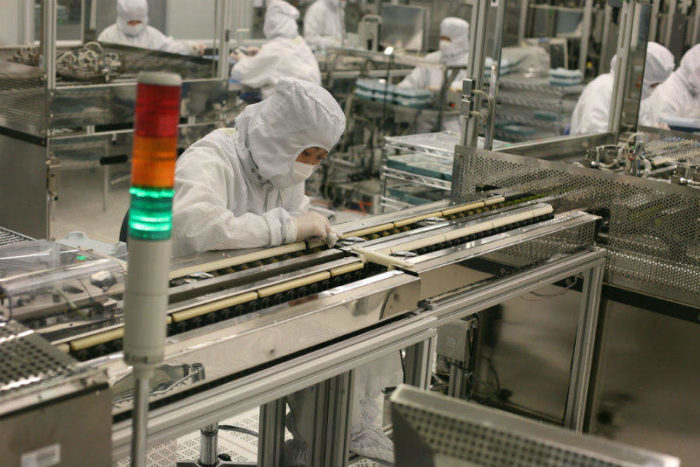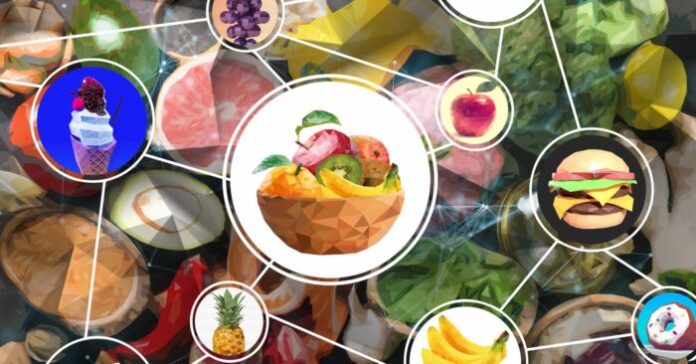The food industry is among the largest industries in the USA. There are trillions of dollars of sales every year, a number many expect to continue climbing. There are thousands of companies vying for their spot in the market. Each is looking for a leg up on their competition, and many are using technology to get it.
Like nearly every industry on the planet, technology has changed how the food industry operates in a number of different ways. It has improved optimization, efficiency, and simplified many processes. But which technologies are fueling these changes? Without any further ado, let’s look at some of the technology that is revolutionizing the food industry.
Continuous Inkjet (CIJ) Printers

While you might not think printers play a large role in the food industry, you’d be mistaken. Printers can provide labeling, packaging, and many other important things often used in the food industry.
As a result, continuous inkjet (CIJ) printers have an important job. While some are just standard printers, there have been several important advancements made recently as well. Some can assist with heavy pigments, some specialize in small characters, and others can even print invisible ink that can only be seen with ultraviolet light.
According to Needham Coding, some of the ink from these CIJ printers is also completely edible. So instead of sticking a sticker on an apple that has the SKU, it can be printed directly onto the apple, reducing waste. These printers can also add identification marks to a variety of other materials, in an incredibly quick manner.
Precision Agriculture

Agriculture is, without a doubt, one of the most important parts of the food industry. Without it, we would struggle to create a wide range of different food products. The USA is home to over 2 million farms, many of which we rely on for supplying all different types of food.
While it would be lovely if every farm was operating at maximum efficiency, this is hardly the case. Whatever the reason, whether pests or simply poor processes, many farms lose a lot of their crops in preventable ways.
However, technology can help. In particular, an innovation called precision agriculture is helping farms improve their operations. Precision agriculture is a farming method that uses technology like GPS and sensors to measure and adjust things like soil level, how much to water their crops, and how to prepare for upcoming weather. All of this information and data helps them make more informed decisions.
The more information a farmer has, the better suited they are to have a higher crop yield and provide more food. Food shortages are a real concern for many people, so we need our farms to produce as much as possible.
Other technology, such as drones, is allowing farmers to see and tend to their damaged crops much quicker than simply driving around. Farming dates back thousands of years and is still quite primitive in some ways, but technology is certainly bringing the industry forward.
Artificial Intelligence

Artificial intelligence (AI) is one of the biggest trends in technology, and it is helping revolutionize the food industry. AI is essential software that is programmed to think and act like humans. While not perfect, significant strides have been made in the space recently, especially in regards to the food industry.
The opportunities for AI in the food industry are nearly endless. AI can help food companies sort products, optimize the supply chain, ensure food is handled safely and cleanly, help customers with concerns, develop new ideas, and so many others. Even with all of these current uses, we are still at the tip of the iceberg. AI will continue to advance and become more useful in the coming years, as well.
Big Data

Big data is all about being able to analyze and extract data from incredibly large and complex sets. Many companies use it to help them get all of the information and stats that they need to make important decisions. Big data gets a lot of use at most companies in the modern day, including food companies.
Big data can help companies in the food industry in several different ways. First of all, it can help companies quickly react and pivot in response to the ever-changing tastes and preferences of the consumer. By analyzing customer data of all kinds, these companies can quickly identify what items are most popular, and which are seeing a downturn.
Big data can also help improve marketing campaigns, learn the ingredients customers want to see more of, and even help develop whole new recipes. Even things like tracking your competition, controlling quality, and build a more transparent supply chain.
Robotics

Many food companies use machinery to create their products as food processing and manufacturing has gotten quite complex. These machines offer enhanced efficiency and can often save a lot of time and space. Eventually, we could get to a time where chefs and those responsible for creating the food (not only packaging it) will be also robots.
They offer unmatched levels of consistency, can essentially work 24 hours a day, and can often get things done in a fraction of the time. Whether it is cutting food, stirring food, cooking food, combining ingredients, or nearly any other task, eventually robots could be created to handle it all.
While we are still a ways off from this, we are already seeing many robots being used in the food industry globally. In fact, the sales value of the food robotics market is already in the hundreds of millions of dollars globally. Pairing these robots with AI or machine learning technology could be hugely beneficial as well. They could learn from mistakes, improve recipes, and have the potential to do so much more.
In conclusion, there are several different types of technology that are revolutionizing the food industry. This article is far from exhaustive; however, as there are many different types of technologies food companies are using. As technology continues to advance, don’t be shocked to see more and more software and tools show their use in the food industry.





![Calgary’s Hottest Neighborhoods for Luxury Homebuyers [2024]](https://thewashingtonote.com/wp-content/uploads/2024/04/Calgary-324x160.png)



